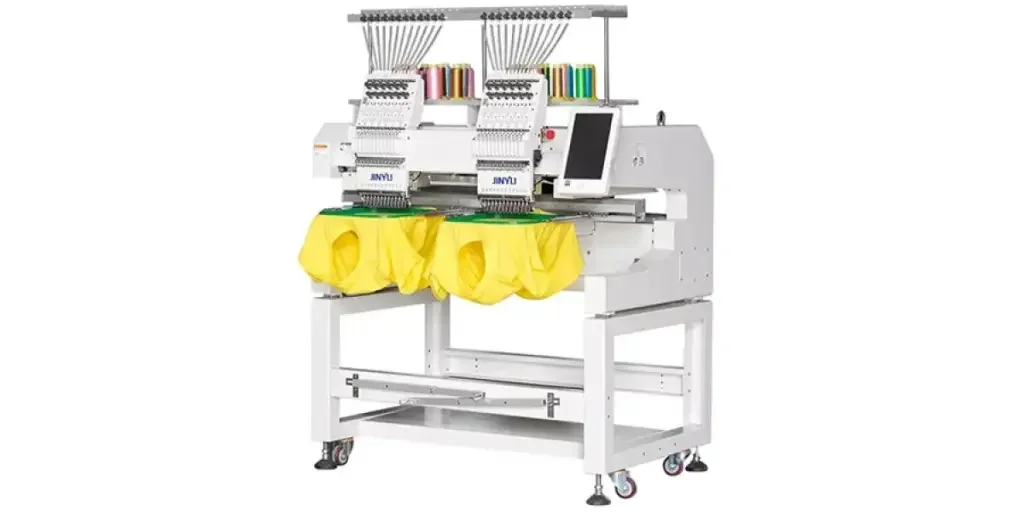Apparel machinery innovation is not slowing down; the supply chain must move along. More vendors and brands are considering a combination of existing and new technologies to add value to their products. With this in mind, this article will walk you through the latest trends in apparel machinery that are making manufacturing more local and sustainable.
Table of Contents
The apparel machinery market share, demand & driving factors
4 essential apparel machinery trends
Conclusion – about 15%
The apparel machinery market share, demand & driving factors
The global apparel market size is expected to grow at a compound annual growth rate (CAGR) of 8.6% to reach $843.13 billion in 2026. The growth is propelled by factors including advanced automation processes and increased investment in cotton ginning. Also, the increasing market for non-woven fabrics and the booming growth of the fashion industry are expected to propel the adoption of machinery.
Further, the online shopping surge is expected to help the market growth of apparel manufacturing. To sustain the increasing demand, apparel manufacturers are investing heavily in computer-controlled embroidery systems to boost efficiency and lower operating costs. These industrial and commercial types of equipment can automatically create special fabric effects, sequins, applique, and chain stitch embroidery, among others. Western Europe boasts the largest apparel market, followed closely by Asia Pacific and North America—all of them accounting for over 80% of the retail sales.
4 essential apparel machinery trends
Rise of automation – Robotic manufacturing
Over the past few years, the apparel manufacturing industries have faced consumer coercion for cheap, high-quality products delivered within short notice. These and other new market conditions have pushed manufacturers to their breaking point, making them ripe for a new era of automation.
The sector is now experiencing a rise in the use of automation in the development of designs and products. The main areas of automation include fabric inspection, sewing, fabric spreading and cutting, and pressing, among others. One of the best-known examples of sewing automation is the sewing robot developed by SewBo. This robot is used for fabric handling and gripping and it can be programmed for a specific size and design.
Another example is the use of fully-automatic fabric-cutting machines that facilitate accurate and smooth fabric cutting. Depending on the desired garment design, the pattern is saved in the computer memory without making marker paper. The cutting machine accurately cuts multiple layers of fabric within a short time. This technology has reduced the number of employees and the time it would take to manually cut the fabric into required patterns.
Digitized supply chain management
Digitization of the supply chain management in the apparel industry is vital for maximum efficiency, which in turn leads to overall business growth. Machine operation is one of the key areas handled under supply chain management. While most production facilities have fragmented supply chains, digitization of the latter has been viewed as an effective solution to save costs.
Embracing technology such as IoT- and AI-powered systems has proved effective after increasing apparel production by over 5% and cutting costs and time by 65%. A case in point of AI-powered systems is Xunxi’s AI-driven manufacturing ecosystem, which enables fully-customized and demand-driven production. This technology forecast has helped traditional manufacturers achieve maximum profitability and lower inventory levels while leveraging efficiencies and economies of scale in smart production.
Fast and sustainable 3D modeling and printing

3D technology reduces labor and saves time in comparison to earlier techniques, especially for mass production. Likewise, the advancement in 3D modeling and printing has enabled apparel manufacturers to design awesome printed fashion with the help of complex shapes and geometries that were not in existence before.
A great example is the Spanish fashion brand ZER, which implements additive manufacturing to design consumer-driven patterns. Throughout their manufacturing processes, they are able to cut back on wasting resources for every garment to ensure sustainability.
Big Data intervention
Big Data is here to meet the demand for virtual fitting and customized fashion. Most fashion enterprises have adopted the use of large amounts of data to get insight and analyze consumer behavior, thus they find matching solutions. They are also collecting fashion sales from websites and mobile devices. They then analyze the data intelligently and choose diverse fashion attribute data to identify preferences such as color, sizes, brands, and so on.
This way, the apparel sector can better meet market demands and brand characteristics while boosting efficiency and improving the quality of products. With virtual consumer fitting models, buyers can conveniently try out different styles to better their decision depending on their tastes and preferences. This has led to increased consumer satisfaction and willingness to pay. The use of customer mannequins and real human body virtual fittings can provide a realistic physical fitting through physical simulation, size adjustment, and customized motion filters.
Conclusion
As the apparel industry continues to evolve, so do the apparel manufacturing technology trends. Integrating the above new technologies into operations, large apparel corporations and retailers alike are maximizing their revenue streams, enhancing efficiency, and reducing operating costs.




